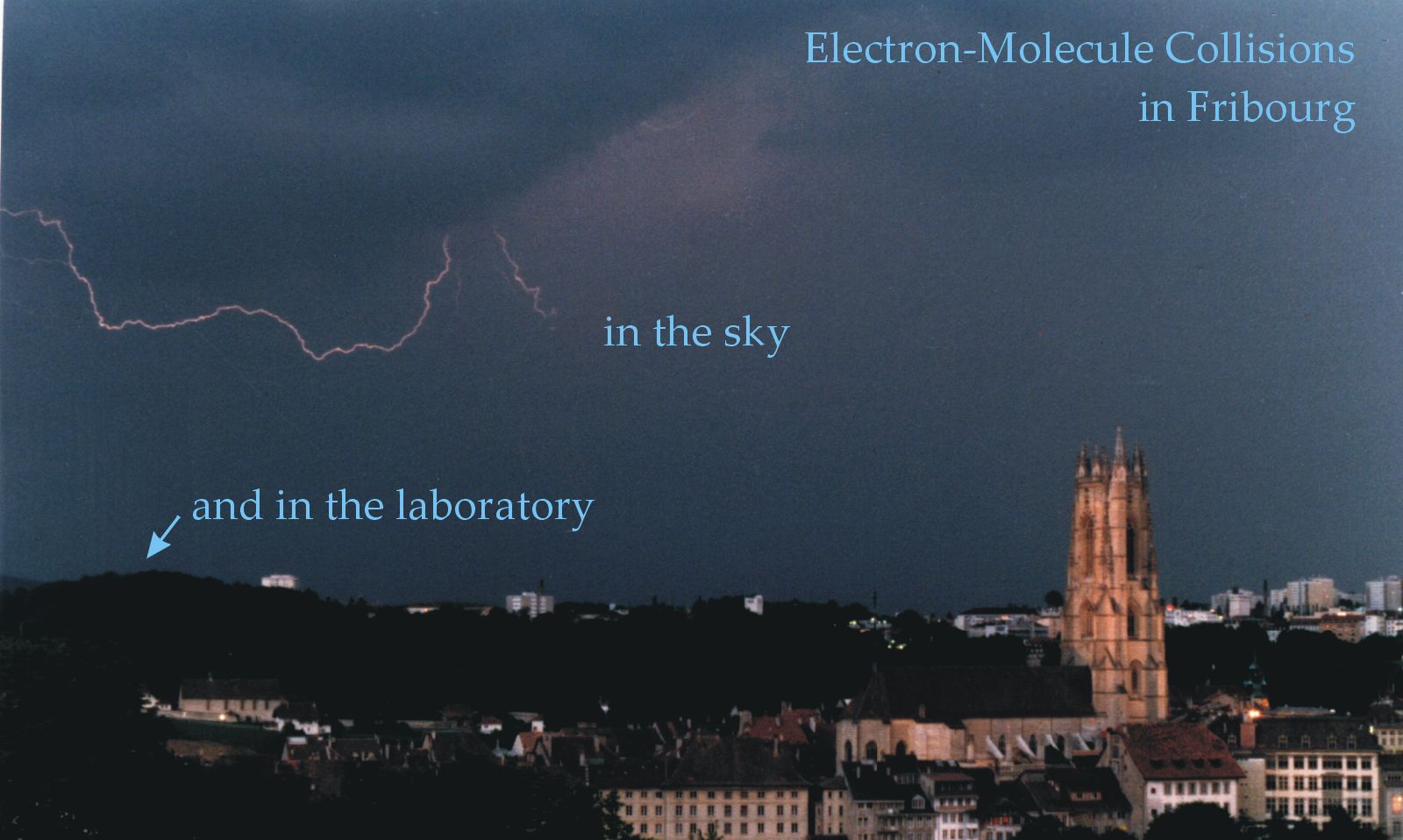Michael Allan Physics and Chemistry with Free Electrons
Introduction
Collisions of free electrons and molecules (or atoms) at low energies play a key role in a number of natural and man-made systems, such as in the upper layers of atmosphere (or in the lightning in the picture above), in plasmas used for semiconductor manufacture, in plasma-assisted chemical vapor deposition, in the glowing gas in front of space vehicles during re-entry, or even in specialized waste treatment.
Understanding and systematic optimization of such systems requires the knowledge of the different excitation and dissociation processes induced by electron impact and their quantitative characterization by measurement of the corresponding absolute cross sections.
The objective of our research was to measure these absolute cross sections and to study all aspects of the electron-molecule collisions for a wide range of targets.
The techniques
Substantial fraction of the effort in Fribourg was developing new instruments — all instruments were home-build — this was in part because I loved to do it, but primarily because our instruments were often better than the existing ones in terms of resolution, high sensitivity, low noise and background, wide angular range, reliable absolute data etc. This not seldom opened a new world, revealing beautiful spectra hitherto buried in background.
It is like when the invention of better microscopes allowed Pasteur to discover bacteria, or beter telescopes revolutionized astronomy. Our self-made spectrometers were our microscopes and telescopes!
Electron Transmission Spectroscopy (ETS)
The Trochoidal Electron Spectrometer (TES) in it's original version was also used to record ET spectra.
Electron Energy Loss Spectroscopy (EELS)
TES and the Spectrometer with Electrostatic Analysers (ELS) were suitable for EELS.
Depending on the mode of operation this method can be used to record three types of spectra:
The Energy-Loss Spectrum, where signal is plotted against the Electron Energy-Loss (for a given incident or residual electron energy).
The spectrum shows excited states of the neutral molecule, often including spin and dipole forbidden transitions.
Examples: Molecular oxygen and ozone Excitation Function, where signal is plotted against the Incident Electron Energy (for a given Energy-Loss).
The spectrum shows states of the negative ion. This method is more versatile than ETS: it shows even the 'weak' bands (e.g., s* resonances or core excited resonances) the selectivity of excitation yields additional information on the nature of the anionic state The Angular Distribution
measures the yield of scattered electrons as a function of the scattering angle.
Dissociative Electron Attachment Spectroscopy (DAS)
measures the yield of stable fragment anions in function of the incident electron energy
Examples of problems to which these techniques are applied:
- Dissociation of aromatic halogenated hydrocarbons, illuminating the role of orbital symmetry on intramolecular electron transfer.
- Electronic excitation and dissociation of molecules relevant for atmospheric chemistry (nitrogen, oxygen, ozone), with emphasis on the experimentally demanding but decisive aspects such as absolute DCSs, the full angular range 0° - 180°, and the near-threshold region.
- High quality, absolute DCSs for inelastic electron-helium collisions, interesting from the theoretical point of view.
- Measurement of (negative) electron affinities and triplet excitation energies, useful in other areas of chemistry.
- and more ...
Examples of development of new instrumentation
- A method to measure inelastic DCSs at 180° scattering angle, using an ‘electron mirror’ in a magnetically focused spectrometer.
- An innovative implementation of the "Manchester solenoid" magnetic angle changer.
- Improvements of resolution of resolution of gas-phase electron spectrometers (at best 7 meV).
- Improvements of the capacity to measure reliably the shape of cross section for slow electrons (starting at about 30 meV). (Important for the study of threshold effects.)
February 2020 (MA)
